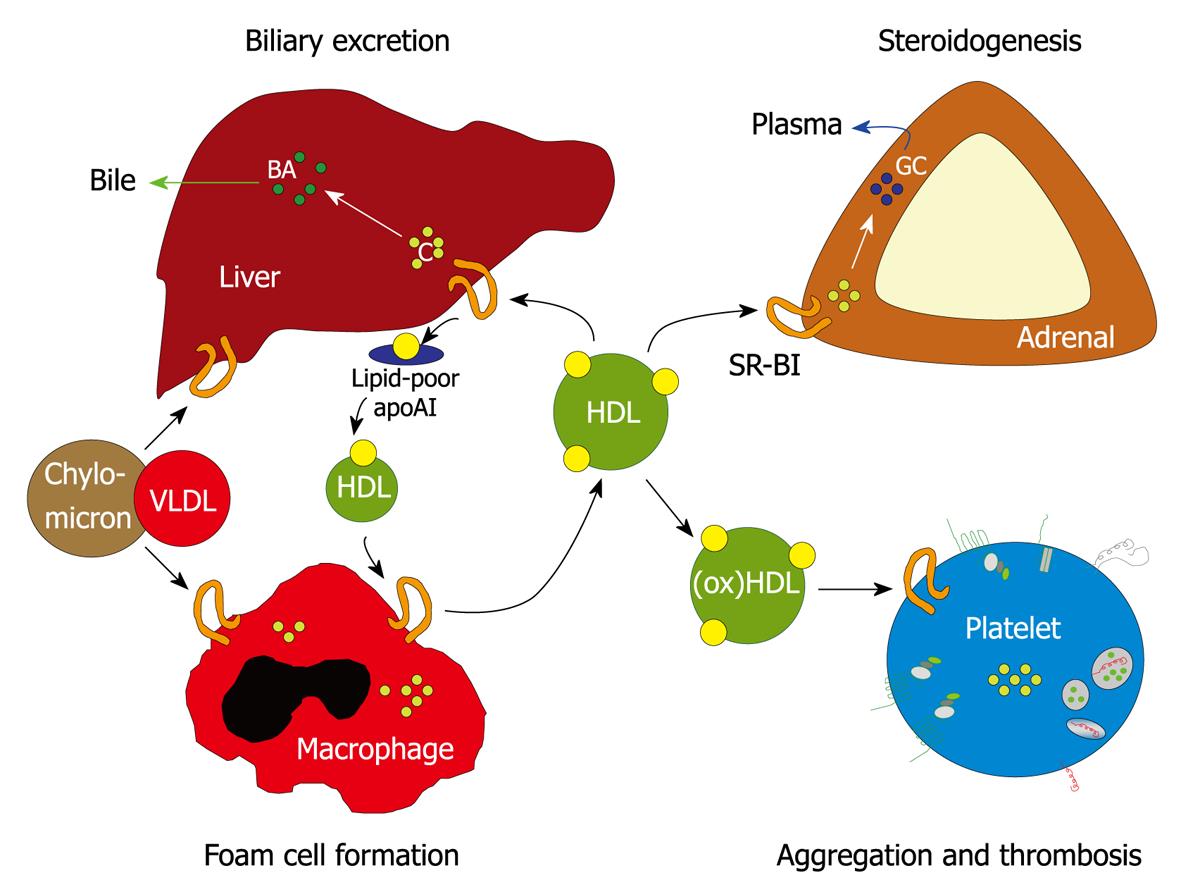Copyright
©2010 Baishideng Publishing Group Co.
World J Gastroenterol. Dec 21, 2010; 16(47): 5916-5924
Published online Dec 21, 2010. doi: 10.3748/wjg.v16.i47.5916
Published online Dec 21, 2010. doi: 10.3748/wjg.v16.i47.5916
Figure 2 Overview of the diverse role of scavenger receptor class B type I in cholesterol and steroid metabolism in mice.
(1) In liver, scavenger receptor class B type I (SR-BI) mediates the selective uptake of cholesterol (C; yellow) from high-density lipoprotein (HDL) that is subsequently converted to bile acids (BA; green) for biliary excretion; (2) HDL-associated cholesteryl esters are taken up via SR-BI in adrenocortical cells, which is efficiently coupled to the synthesis and subsequent secretion of glucocorticoids (GC; blue) into plasma; (3) SR-BI binds apolipoprotein (apo)B-containing lipoproteins, i.e. chylomicrons and very low density lipoprotein (VLDL), in liver and macrophages, which contributes to macrophage foam cell formation; (4) SR-BI is able to efflux cholesterol from macrophages to small HDL particles, which inhibits foam cell formation; and (5) HDL can interact with platelets, in part via the direct action of SR-BI, to modulate platelet aggregation and susceptibility to thrombosis.
- Citation: Hoekstra M, Berkel TJV, Eck MV. Scavenger receptor BI: A multi-purpose player in cholesterol and steroid metabolism. World J Gastroenterol 2010; 16(47): 5916-5924
- URL: https://www.wjgnet.com/1007-9327/full/v16/i47/5916.htm
- DOI: https://dx.doi.org/10.3748/wjg.v16.i47.5916









